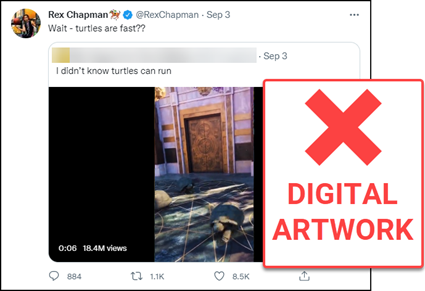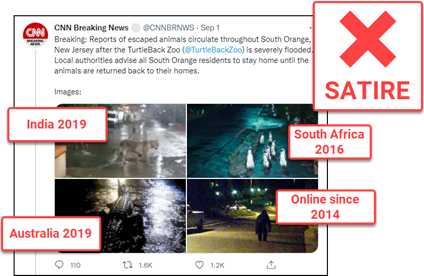GSAN: Ivermectin reporting missteps | Turtles don’t jog | Faulty mask tests
|
|
|
Learn about news literacy this week |
|
|
Top picks Widely criticized news coverage involving Oklahoma hospitals and ivermectin overdoses raises important questions about how reporting fell short and how those missteps fueled media distrust and misinformation. Much of the criticism has focused on a Rolling Stone story that amplified disputed reporting from an Oklahoma news outlet. In an “update” note later added to the story, Rolling Stone indicated it was “unable to independently verify” a key claim in the piece.
Check out these five tips to help make the tough task of recognizing misinformation a little easier. Recognizing falsehoods can be difficult, especially when we’re repeatedly exposed to them, or when they resonate with our pre-existing ideas about the world. To help teens meet this challenge, a video advice series called “The New Normal” — produced by The Lily, a Washington Post publication focused on stories about women and gender — recommends taking steps like seeking credible sources with a quick search, reflecting on the influence of your own biases, and educating others.
Use this new Reuters Institute study on trust in news to reflect on different attitudes toward news and the role of trust and reliable information in a democracy. (One key finding: For news organizations looking to build trust among media skeptics, a main hurdle “is not hostility, but indifference.”) |
|
Viral rumor rundown These “running turtles” aren’t real — they’re CGI  NO: The video in this tweet, which seems to show a group of turtles or tortoises running in a circle, is not authentic. YES: It is computer-generated imagery created by Vernon James Manlapaz, whose digital artwork has previously been mistaken as authentic.
No, animals didn’t escape from a New Jersey zoo after Hurricane Ida  NO: Animals did not escape from Turtle Back Zoo in West Orange, New Jersey, after remnants of Hurricane Ida hit the area. NO: The account that shared this tweet is not affiliated with CNN and is not a legitimate news source. YES: It’s a parody account. YES: Turtle Back Zoo and Essex County Executive Joseph DiVincenzo, Jr., both confirmed that no animals escaped the zoo during the storms on Sept. 1. YES: Other instances of this rumor circulated as screenshots of fabricated text messages.
Faulty demo does not show masks are unsafe  NO: The air quality demonstration in this video — purportedly of a school board meeting in Lago Vista, Texas — does not demonstrate that mask mandates are unsafe for children. NO: The equipment in this video — described as an air quality monitor for confined workspaces — does not accurately assess the oxygen levels of people wearing masks. YES: The demonstration in the video did not distinguish between exhaled air and inhaled air, so it could not provide an accurate reading. YES: A number of studies using accurate measurement methods have shown that wearing cloth and disposable masks does not cause people’s oxygen levels to drop or carbon dioxide levels to rise.
|
 Conspiracy narratives about 9/11 are likely to spike with the 20th anniversary of the attacks — this review can help you recognize them. Hundreds of websites are pushing COVID-19 misinformation, according to a recent NewsGuard analysis. Pro-Kremlin trolls are filling news story comment sections. Press freedom concerns grip Afghanistan. And falsehoods are spreading on Spanish-language radio shows, closed messaging apps and social media. (Yep, dangerous ivermectin claims included.) |
|
Thanks for reading! Your weekly issue of Get Smart About News is created by Peter Adams (@PeterD_Adams), Hannah Covington (@HannahCov) and Pamela Brunskill (@PamelaBrunskill), and edited by Mary Kane (@marykkane). |
|
